Weekly Current Affairs (1st to 7th March 2025) - 2 | Weekly Current Affairs - UPSC PDF Download
India’s Path to a High-Income Economy
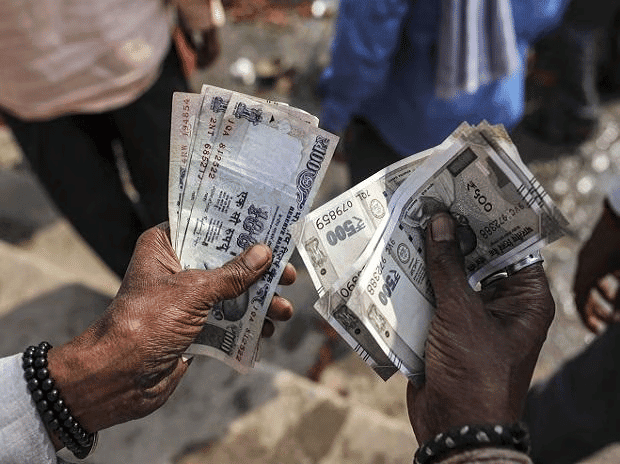
Why in News?
A recent World Bank report titled “Becoming a High-Income Economy in a Generation” emphasizes that India must achieve an average annual growth rate of 7.8% over the next 22 years to attain high-income country (HIC) status by 2047. The report advocates for ambitious reforms and their effective implementation to reach this target.
Key Takeaways
- India's share in the global economy has increased from 1.6% in 2000 to 3.4% in 2023, making it the 5th largest economy globally.
- Over the two decades prior to the pandemic, India’s economy grew at an average annual rate of 6.7%, second only to China among major economies.
- To achieve high-income status by 2047, India's gross national income (GNI) per capita needs to almost increase eightfold from USD 2,540 in 2023.
Additional Details
- Growth Scenarios:The report presents three potential scenarios for India's growth trajectory:
- Slow Reforms: Below 6% - India remains upper-middle-income, failing to achieve HIC.
- Business as Usual:6.60% - India improves but does not attain high-income status.
- Accelerated Reforms:7.80% - India achieves high-income country status by 2047.
- The transition to high-income status is ambitious yet possible, as only a few countries have successfully transitioned within two decades.
- Key challenges include a declining investment rate, low foreign direct investment (FDI) ratios, and issues in job creation.
To move towards a high-income economy, India must implement strategic reforms focusing on investment, job creation, and enhancing trade competitiveness. These efforts are crucial to realize the goal of becoming a high-income country by 2047.
Enhancing India's Agri-Exports
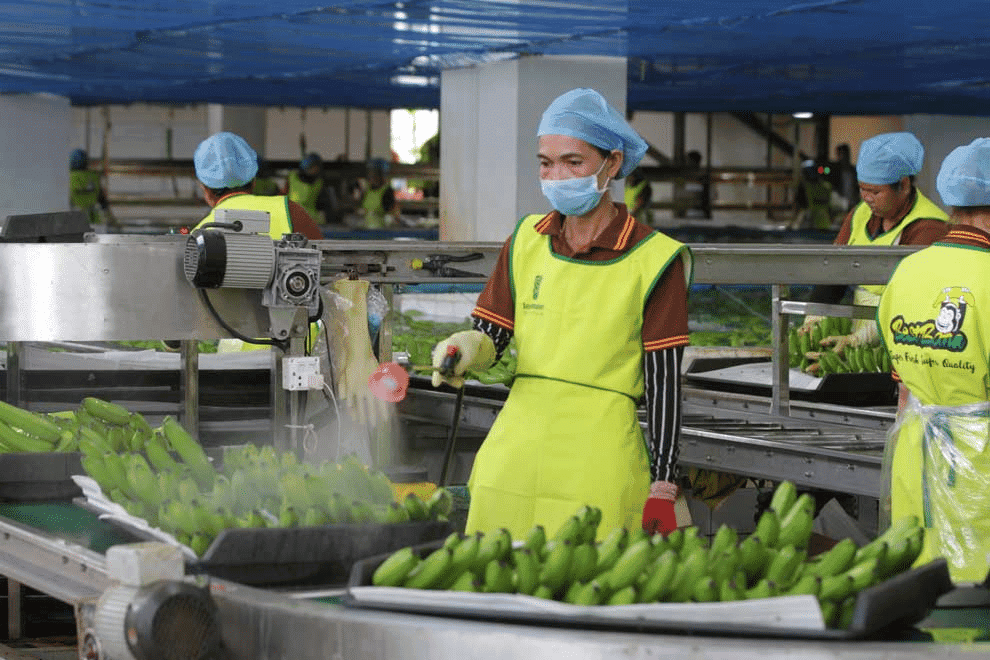
Why in News?
India’s agricultural exports have experienced a growth of 6.5%, reaching USD 37.5 billion during the period from April to December 2024. In contrast, imports have surged by 18.7% to USD 29.3 billion, leading to a reduction in the agricultural trade surplus.
Key Takeaways
- India is now a net importer of cotton, reversing its previous status as a leading exporter.
- The agricultural trade surplus has significantly decreased from a peak of USD 27.7 billion in 2013-14 to USD 16 billion in 2023-24.
- Global commodity price fluctuations have impacted India's agricultural export competitiveness.
- Major export commodities include marine products, sugar, wheat, and rice.
Additional Details
- Cotton Trade Shift: India, once the second-largest exporter of cotton after the USA, has seen its cotton exports plummet from USD 4.3 billion in 2011-12 to USD 1.1 billion in 2023-24.
- Sugar & Wheat Exports: Exports of sugar and wheat have been restricted by the government to control domestic food inflation, impacting overall trade.
- Rice Exports: Despite bans on white rice and export duties on parboiled rice, non-basmati rice exports have remained robust.
- Cash Crops: Exports of coffee and tobacco have surged due to adverse weather conditions affecting major producers globally.
- Key Export Destinations: India exported USD 48 billion in agri-products in 2023, with significant contributions from Asia, including top customers like China and the UAE.
India's agricultural sector faces numerous challenges that hinder its export potential. These include non-tariff barriers imposed by developed nations, unfair competition due to substantial subsidies provided to farmers in those countries, and frequent export restrictions by the Indian government.
Challenges in India's Agricultural Exports
- Non-Tariff Barriers (NTBs): Stringent regulations, such as sanitary and phytosanitary standards, create obstacles for Indian agricultural products in international markets.
- Unfair Level Playing Field: Heavy subsidies in developed countries disadvantage Indian farmers, contributing to a lack of competitiveness.
- Frequent Export Restrictions: Export bans and restrictions to manage domestic prices lead to decreased reliability in the global market.
Way Forward
- Establish Market Intelligence Units: Setting up units to provide real-time data on international demand can help farmers and exporters align with market needs.
- Support Agri-Tech Startups: Encouraging innovation in the agricultural sector can maximize trade potential.
- Diversify Export Markets: Exploring new markets and products, especially in Africa and Southeast Asia, can enhance export growth.
- Compliance with SPS Measures: Educating participants in the agri-value chain on compliance can improve quality and competitiveness.
In conclusion, India must address its agricultural export challenges while capitalizing on new opportunities by enhancing market intelligence, supporting innovation, and ensuring compliance with international standards to increase its share in global agricultural trade.
India’s Textile Industry
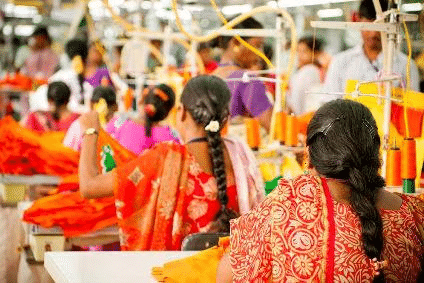
Why in News?
The textile industry in India is poised to become a global leader, propelled by a burgeoning domestic market and increasing international interest. However, its growth is hindered by several challenges, including high production costs, fragmented supply chains, and sustainability issues.
Key Takeaways
- The textile industry contributes 2.3% to India's Gross Domestic Product (GDP), with projections to reach 5% by 2030.
- It accounts for 13% of industrial production and 12% of exports, employing around 4.5 crore workers.
- In FY24, textile exports stood at USD 35.9 billion, primarily to the US, EU, and UAE.
- India is the largest textile manufacturer globally and ranks as the 6th largest exporter, contributing to 3.9% of global trade.
- India is the 2nd largest producer of cotton and jute and is also a leading producer of man-made fibers (MMF).
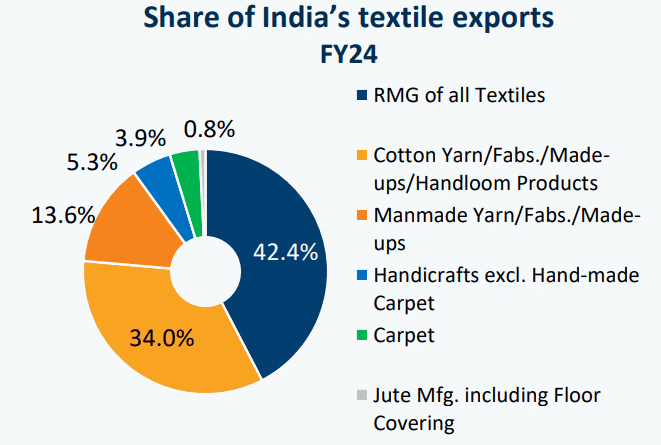
Market Growth Projections
- India’s textile and apparel market is projected to reach USD 350 billion by 2030.
Government Initiatives
- PM Mega Integrated Textile Region and Apparel (MITRA) Parks: Aimed at developing textile infrastructure.
- Production Linked Incentive (PLI) Scheme for Textiles: Encouraging production in the textile sector.
- National Technical Textile Mission (NTTM): Promoting technical textiles.
- 100% Foreign Direct Investment (FDI) is allowed in textiles under the automatic route to attract foreign investments.
Key Challenges Facing India’s Textile Industry
- Lack of Trade Agreements: Countries like Vietnam and China benefit from Free Trade Agreements (FTAs), making their exports more competitive. India lacks similar agreements in key textile markets.
- Stagnant Growth and Declining Exports: The textile sector has contracted by 1.8% annually, with apparel exports decreasing from USD 15.5 billion in FY20 to USD 14.5 billion in FY24.
- Expensive Raw Materials: Quality Control Orders (QCOs) impact imports, leading to reliance on costlier local alternatives.
- Low Export Competitiveness: India's textile exports are more expensive relative to competitors like China and Vietnam due to fragmented supply chains and high logistics costs.
- Sustainability Pressures: Global brands impose strict environmental standards, affecting India's textile exports.
Way Forward
- Strengthening Supply Chains: Developing Vertically Integrated Textile Parks to streamline production and reduce costs.
- Reassessing QCOs on polyester and viscose to facilitate controlled imports.
- Establishing more PM MITRA parks in regions with high job demand to enhance productivity.
- Policy Reforms: Securing preferential trade agreements with the EU, US, and other key markets.
- Boosting MMF: Encouraging domestic consumption of MMF through incentives.
- Sustainability: Providing financial support to MSMEs for adopting sustainable practices and renewable energy solutions.
In conclusion, addressing the challenges facing India's textile industry through strategic reforms and initiatives will enhance its competitiveness on a global scale and contribute significantly to the country's economic growth.
Challenges in Slum Redevelopment
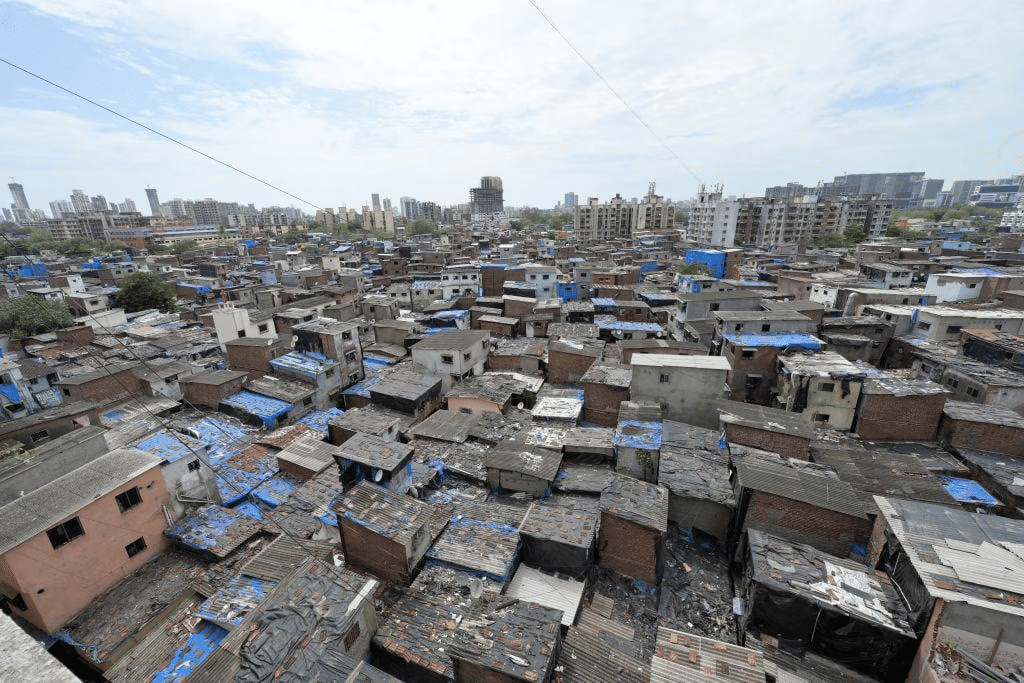
Why in News?
Following a Supreme Court (SC) directive, the Bombay High Court (HC) has initiated a first-of-its-kind review of the Maharashtra Slum Areas Act, 1971. The review aims to address systemic gaps causing delays in slum redevelopment projects, which violate slum dwellers’ right to shelter (Article 21) and livelihood.
Key Takeaways
- The Maharashtra Slum Areas (Improvement, Clearance and Redevelopment) Act, 1971 empowers the state to declare areas as "slum areas" and acquire land as needed.
- The Slum Rehabilitation Authority (SRA) oversees redevelopment through private developers, ensuring that slum dwellers are included in the process.
- Under the Maharashtra Slum Rehabilitation Scheme 1995, developers fund redevelopment and provide housing at no cost to slum dwellers in exchange for additional construction rights.
Additional Details
- What are Slums? According to the United Nations, a slum is a run-down urban area characterized by substandard housing, poverty, and lack of tenure security. As of the 2011 census, slums constituted 17.4% of India’s urban population.
- Reasons for Growth of Slums: Key factors include population growth, poverty, and rural-to-urban migration, particularly from less developed states to more prosperous ones like Maharashtra and Gujarat.
- Issues Due to Neglecting Slum Development: Slums attract rural poor with promises of opportunities but often lead to health risks, exploitation, crime, and inadequate access to education.
- Challenges in Slum Rehabilitation: Major hurdles include land acquisition issues, financial constraints for developers, social resistance from communities, and environmental challenges due to poor infrastructure.
The path forward includes a holistic approach to slum rehabilitation, incorporating community engagement and innovative financial models. By focusing on effective governance and transparency, and integrating environmental considerations, significant improvements can be made in the living conditions of slum dwellers.
NITI Aayog Calls for Quantum Strategy

Why in News?
A research paper titled “Quantum Computing: National Security Implications & Strategic Preparedness” by NITI Aayog’s Frontier Tech Hub (NITI-FTH), emphasizes the significance of quantum computing for India’s security and economy. The report advocates for a multi-pronged approach to mitigate national security risks associated with advancements in quantum technology.
Key Takeaways
- Global Quantum Investments: Over 40 billion USD pledged by more than 30 governments worldwide, with China leading at 15 billion USD.
- India’s Scenario: The National Quantum Mission (NQM) was launched with a budget of Rs 6,003 crore to develop indigenous capabilities in quantum technology, aiming to position India as a global leader in this field.
Implications
- Quantum technology has dual-use applications in military and intelligence sectors, enhancing encryption, surveillance systems, and weaponry, providing a technological edge in defense.
- Economically, quantum technology drives innovation, creates high-tech industries, and attracts investments.
Challenges Highlighted by NITI Aayog Report on Quantum Computing
- Lower Funding Compared to Global Peers: India’s allocation of Rs 6,003 crore (~USD 750 million) for the NQM is significantly lower than other global players, limiting competitive ability in quantum infrastructure and research.
- Weak Domestic Supply Chain: Reliance on specialized components like cryogenic systems and high-purity materials creates dependence on foreign suppliers.
- Limited Startup and Industry Participation: India's quantum ecosystem is primarily driven by academia, with inadequate private sector investment hindering scalability.
- Cybersecurity Risks: Quantum computers pose a threat to existing encryption standards, risking sensitive data stored using traditional methods.
- Intelligence & Espionage: Enhanced capabilities in signals intelligence (SIGINT) through quantum computing could expose confidential communications and strategies.
What is Quantum Technology?
Quantum technology utilizes the principles of quantum mechanics to develop new methods of computation and communication, promising advancements in various fields including cybersecurity and data processing.
Recommendations Suggested by NITI Aayog on Quantum Computing
- Enhancing National Security Policy: Establish a Task Force to monitor global quantum advancements and assess potential threats, including developing an Early Warning System.
- Boosting R&D: Increase funding for R&D to support quantum startups and indigenous hardware development, encouraging private sector involvement.
- Strengthening Domestic Supply Chain: Develop a robust manufacturing ecosystem for critical quantum hardware components and reduce foreign dependency.
- Expanding Global Partnerships: Forge agreements with leading quantum nations like the US and EU to access cutting-edge research and technologies.
In summary, as quantum technology continues to advance, it is crucial for India to address the associated security challenges while enhancing its national capabilities in this critical field.
PMMVY Implementation Concerns
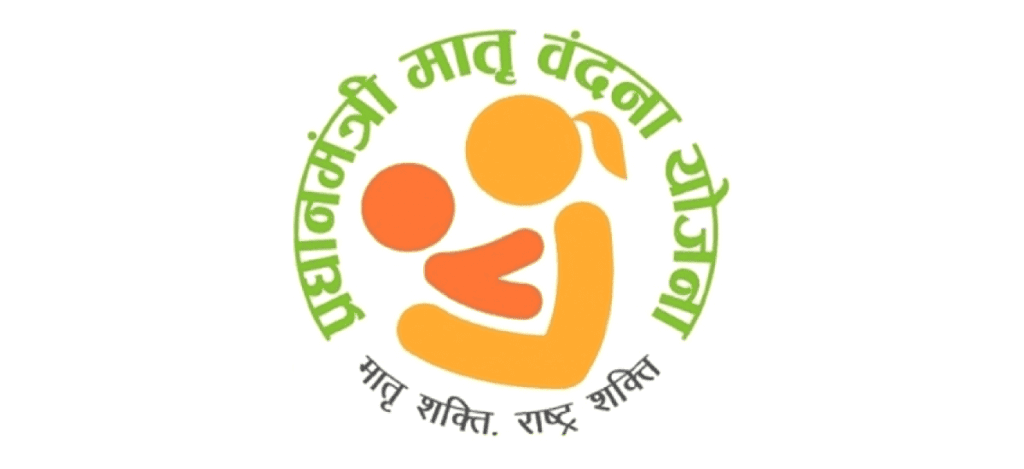
Why in News?
Despite maternity benefits being a legal entitlement under the National Food Security Act (NFSA) of 2013, the Pradhan Mantri Matru Vandana Yojana (PMMVY) faces significant implementation challenges, leaving millions of pregnant women without essential benefits.
Key Takeaways
- PMMVY is a Centrally Sponsored scheme launched in 2017 under the Ministry of Women and Child Development.
- The scheme provides maternity benefits to eligible pregnant and lactating women, excluding government employees and those receiving similar benefits.
- Objectives include ensuring maternal nutrition, promoting institutional deliveries, and supporting financial stability.
- There are serious concerns regarding coverage, budget allocation, and implementation effectiveness.
Additional Details
- PMMVY: This scheme offers financial assistance to support maternal health and nutrition. For the first child, Rs 5,000 is provided, with additional benefits under the Janani Suraksha Yojana (JSY) bringing the total to around Rs 6,000. For the second child, Rs 6,000 is given only if the child is a girl, promoting gender equality and discouraging female feticide.
- Concerns:
- Restricted Coverage: The scheme limits benefits to the first two children, contradicting NFSA, which mandates universal maternity benefits.
- Budget Cuts: In 2023-24, the allocation for the scheme was Rs 870 crore, significantly reduced from previous years.
- Poor Implementation: Effective coverage dropped from 36% in 2019-20 to just 9% in 2023-24.
- Bureaucratic and Digital Hurdles: Issues with Aadhaar-based verification and complex application processes hinder access for digitally illiterate women.
- Maternity Benefits Under NFSA: The NFSA aims to provide food and nutritional security, ensuring access to affordable food grains. All pregnant women (excluding those in the formal sector) are entitled to Rs 6,000 per child as maternity benefits, crucial for maternal and child health.
In summary, to improve the PMMVY scheme and align it with the NFSA, it is essential to involve grassroots workers for better implementation, extend benefits to all pregnant women, and create a holistic approach that integrates various maternal care initiatives. Regular monitoring, audits, and the removal of digital barriers are also necessary to ensure that benefits reach all eligible women efficiently.
Pradhan Mantri Matru Vandana Yojana (PMMVY) Implementation Challenges
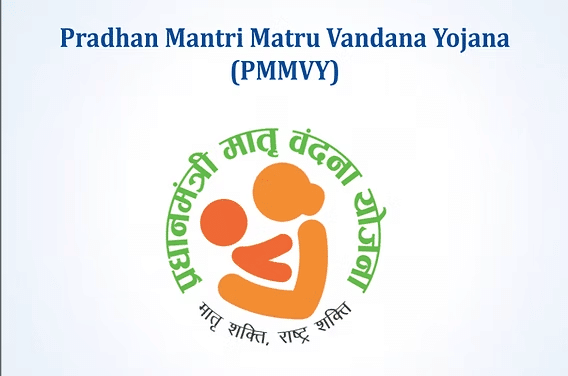
Why in News?
Despite maternity benefits being a legal entitlement under the National Food Security Act (NFSA), 2013, the Pradhan Mantri Matru Vandana Yojana (PMMVY) faces significant implementation challenges, leaving millions of pregnant women without essential benefits.
Key Takeaways
- PMMVY is a Centrally Sponsored scheme launched in 2017 to provide maternity benefits to eligible pregnant and lactating women.
- It excludes government employees and those receiving similar benefits.
- The scheme aims to ensure maternal nutrition, promote institutional deliveries, and support financial stability.
- Key concerns include restricted coverage, budget cuts, poor implementation, and bureaucratic hurdles.
Additional Details
- PMMVY: The scheme provides financial assistance to support maternal health and nutrition. For the first child, Rs 5,000 is provided, and additional benefits under Janani Suraksha Yojana (JSY) ensure a total of around Rs 6,000. For the second child (only if a girl), Rs 6,000 is given to promote gender equality and discourage female feticide.
- Concerns:
- Restricted Coverage: The scheme violates the NFSA, 2013, by limiting benefits to the first two children.
- Budget Cuts: In 2023-24, the central government allocated just Rs 870 crore for the scheme, significantly less than previous years.
- Poor Implementation: Effective coverage dropped from 36% in 2019-20 to just 9% in 2023-24.
- Bureaucratic and Digital Hurdles: Issues with Aadhaar-based verification and complex application processes hinder access for many women.
- Provisions for Maternity Benefits Under NFSA: The NFSA, 2013, aims to provide food and nutritional security, marking a shift to rights-based food security. It entitles all pregnant women (except those in the formal sector) to Rs 6,000 per child as maternity benefits, crucial for ensuring proper nutrition and healthcare.
- Way Forward:
- Involve grassroots workers to identify and assist eligible beneficiaries.
- Extend benefits to all pregnant women as mandated by the NFSA.
- Ensure better linkage with other maternal health initiatives for comprehensive care.
- Introduce alternative identity verification to remove digital hurdles.
In conclusion, addressing the implementation challenges of PMMVY is essential to align it with the provisions of the NFSA, ensuring that all pregnant women receive the support and benefits they are entitled to for better maternal and child health outcomes.
|
287 docs|142 tests
|
FAQs on Weekly Current Affairs (1st to 7th March 2025) - 2 - Weekly Current Affairs - UPSC
| 1. What are the key strategies proposed by NITI Aayog to enhance India's economy towards a high-income status? |  |
| 2. How does India plan to enhance its agricultural exports? |  |
| 3. What are the main challenges faced by India's textile industry? |  |
| 4. What are the concerns regarding the implementation of the Pradhan Mantri Matru Vandana Yojana (PMMVY)? |  |
| 5. What are the significant challenges in slum redevelopment in India? |  |
















